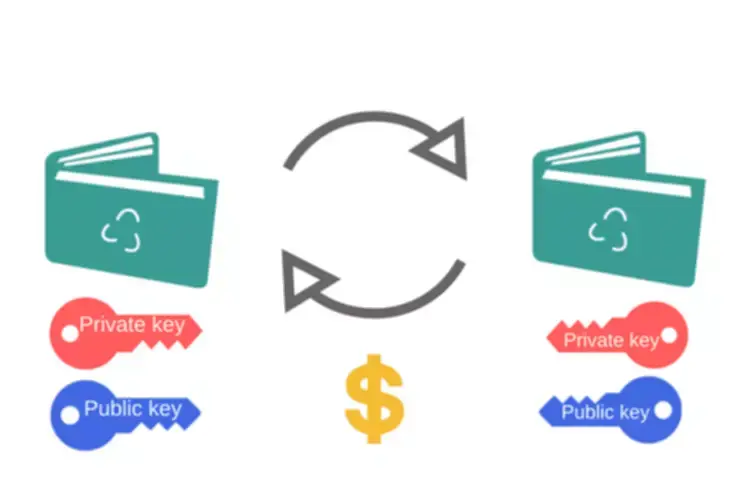As new decentralized financial solutions emerge, companies and individuals alike are wanting to take advantage of them. Decentralized finance has not solely improved monetary inclusion around the world but has also made digital belongings extra accessible and simpler to handle. A basic example of cryptocurrency mining is that of Bitcoin’s Blockchain network. Bitcoin’s community uses Proof of Work processing for validating transactions & creating new blocks. In order to create a brand new block, a miner wants to resolve a complex mathematical hash.
- But smart contracts are pieces of programming code which are still written by humans.
- Staking is regularly viewed as a less complicated passive revenue approach because it solely requires buyers to choose on a staking pool and lock of their cryptocurrency.
- It offers rewards in the form of curiosity, with a portion of transaction fees given to each yield farmer.
- Comparable to traditional finance, lending and borrowing are present in the crypto markets.
- Harnessing staking and liquidity mining in your cryptocurrency journey can present impressive returns when accomplished right.
- In Tezos, customers can delegate their staked cash to a delegate who will validate transactions on their behalf.
Liquidity providers or LPs play a crucial position in yield farming whereas crypto mining primarily occurs by investing in mining swimming pools. The node that stakes the next number of Cryptocurrency, larger would be its chances of getting selected by the network for validating. Since the variety of Cryptocurrency issues in getting greater rewards on the PoS community traders like us normally favor parking their funds in Staking Swimming Pools. Additional, many exchanges like Binance, CEX.IO, Huobi and so on operate Staking Pools. Already, you can stake cryptocurrency comparatively safely, for crypto standards, for great double-digit APY, unheard of out of doors the crypto world.
Like all funding avenues, it demands understanding, research, and caution. For these prepared to navigate its complexities, liquidity mining can certainly be a rewarding journey. A rug pull is a malicious maneuver inside the crypto space the place developers abandon a project and run off with users’ funds. Given the decentralized nature, the dearth of a centralized entity to supervise actions implies that individuals must exercise warning.
To validate transactions on Proof-of-Stake (PoS) blockchains, stakers are chosen similarly to how mining facilitates consensus in PoW (Proof of Work) blockchains. Disparities between staking, yield farming, and liquidity mining often come up when individuals discuss DeFi buying and selling. In each case, individuals are required to pledge their crypto assets in decentralized protocols or purposes differently. Yield farming and liquidity mining are better suited for these who are prepared to tackle higher dangers for potentially higher rewards.
Bybit Receives Uae In-principle Approval Following $1Four Billion Breach
Yield Farming and Liquidity mining have become the buzzwords with the explosive development of Decentralized Finance aka ‘DeFi’. As we stand today, there are a quantity of opportunities to earn and multiply passive earnings. I guess this is enough of a buildup, let’s dig deep into the ideas now.

Liquidity Mining Benefits The Defi Market
Proof of Stake is the consensus mechanism behind staking and goals to be a extra efficient predecessor of Proof of Work originally made for Bitcoin. Now rather than computing power determining mining rewards, it’s based mostly on the quantity staked. To start with, staking is a good way to earn more cryptocurrency, and interest rates can be extraordinarily high. You may have the ability to earn greater than 10% or 20% every year in some cases.
Earn Rewards By Providing Liquidity

In return, a Yield Farmer gets a share of platforms charges every time he offers liquidity to a DEX. It is totally as a lot as the Yield Farmer when he wants to drag out his crypto property from the Pool. Although staking, yield farming and liquidity mining can often be used interchangeably, there are some key differences. Staking is commonly seen as the only of the three and the most accessible to the average crypto fanatic. Yield farming is the act of generating rewards corresponding to curiosity and cryptocurrency by staking property https://www.xcritical.com/ on dApps via a DeFi platform.
Yield farmers can reinvest their earnings in the scheme to generate extra crypto curiosity as long as they place confidence in the network and the protocols they utilize. As a end result, yield farming could also be a unbelievable technique to diversify your investment portfolio and increase your income. When comparing yield farming vs staking, the profitable tactic is clear to buyers in search of Know your customer (KYC) liquidity. Each of those techniques require a crypto investor to own a sure amount of crypto assets so as to be profitable. The debate about one of the only ways to generate passive revenue from cryptocurrency has been raging for years.
In liquidity mining, the miners earn a dividend swap of 0.3% together with newly minted tokens upon the successful transaction of every block. In yield farming, the liquidity providers attempt to maximize yields by shifting funds via completely different DeFi platforms. They additionally use various DeFi mechanisms like fund leveraging or liquidity mining via borrowing and lending of stable coins. At its core, liquidity mining includes offering liquidity to sure platforms, and in return, members usually obtain liquidity pool tokens as a illustration of their stake.
Rates frequently fluctuate, forcing liquidity farmers to alternate between completely different venues. The disadvantage is that each time a farmer departs or enters a liquidity pool, they have to pay fuel bills. When staking, your funds act as collateral on a blockchain as they validate transactions.
Yield farming works on the borrowing and lending of funds the place the buyers defi income farm maintain the governance of tokens. Crypto miners earn rewards by generating new blocks by way of verified transactions within the mining pool. As talked about earlier, Compound began rewarding its customers with governance token COMP.
Mainly, it’s a sensible contract that collects funds to facilitate crypto customers to lend, borrow, purchase, and promote cryptocurrency. These who deposit funds into liquidity pools are known as liquidity suppliers (LPs) and use their funds to energy the DeFi ecosystem. Staking is generally considered to be the safest of the three funding choices, because it involves holding your digital belongings in a wallet and contributing to the security of the network. Yield farming and liquidity mining, on the other hand, are more dangerous, as they involve transferring your digital property between different liquidity pools or providing liquidity to these swimming pools.
Merely put, staking is the method of holding a sure amount of cryptocurrency in a wallet or trade account, after which utilizing that steadiness to assist the network. This can be carried out in a few other ways, depending on the specific cryptocurrency you’re staking. Yield farming additionally provides a lifeline for these tokens with low trading quantity in the open market to be traded at ease.
